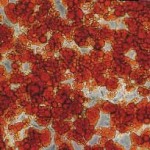Growing Fat Cells
Friday, August 28, 2009Anyone taking an antidiabetic drug belonging to the group of “glitazones” has probably experienced some weight gain (despite improvements in diabetes control). This is because this group of compounds stimulate the nuclear hormone receptor PPARg, believed to be one of the key switches that turns on the growth and expansion of fat cells. In fact, till now, the PPARg receptor was considered both necessary and sufficient for the differentiation and growth of fat cells.
This is no longer true, according to a paper just published in the Journal of Biological Chemistry by Craig Younce and colleagues from the the University of Central Florida, Orlando, FL.
In their study, the researchers convincingly demonstrate that a molecule called MCPIP (for MCP-1-induced protein) is not only essential for promoting fat cell differentiation but is in fact effective even in cells that do not express PPARg.
MCP-1 is found to be increased in obesity, possibly due to increased formation in macrophages, hypoxic fat cells, or perhaps even as a response to increased endotoxin levels produced by gut flora.
While the identification of what now appears to be the new key molecule that allows and drives fat cell formation, several caveats are in order.
Firstly, these experiments were performed in 3T3-L1 cells, a commonly used mouse cell line, which does not always behave in the same manner as human fat cells.
Secondly, findings in cell culture are of course not always reflective of what happens in the whole tissue or the whole animal.
Nevertheless, research that leads to a better understanding of the complex biology of fat tissue formation can potentially provide important insights ultimately paving the way to new treatments for obesity and its complications.
AMS
Edmonton, Alberta



